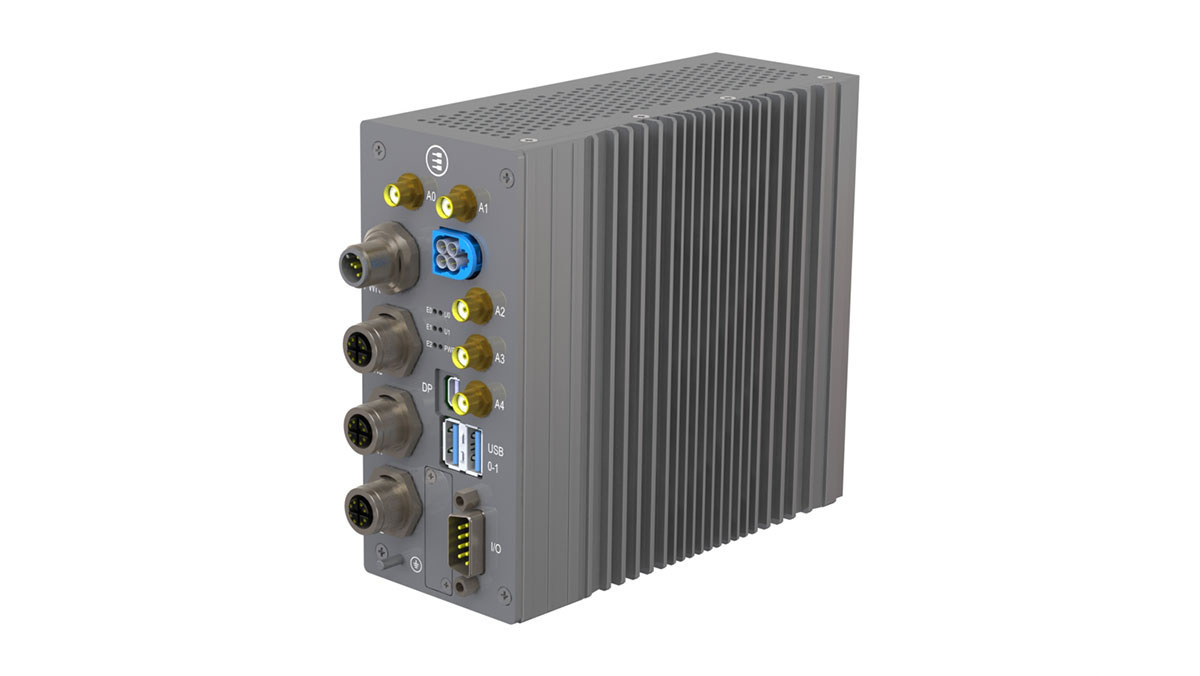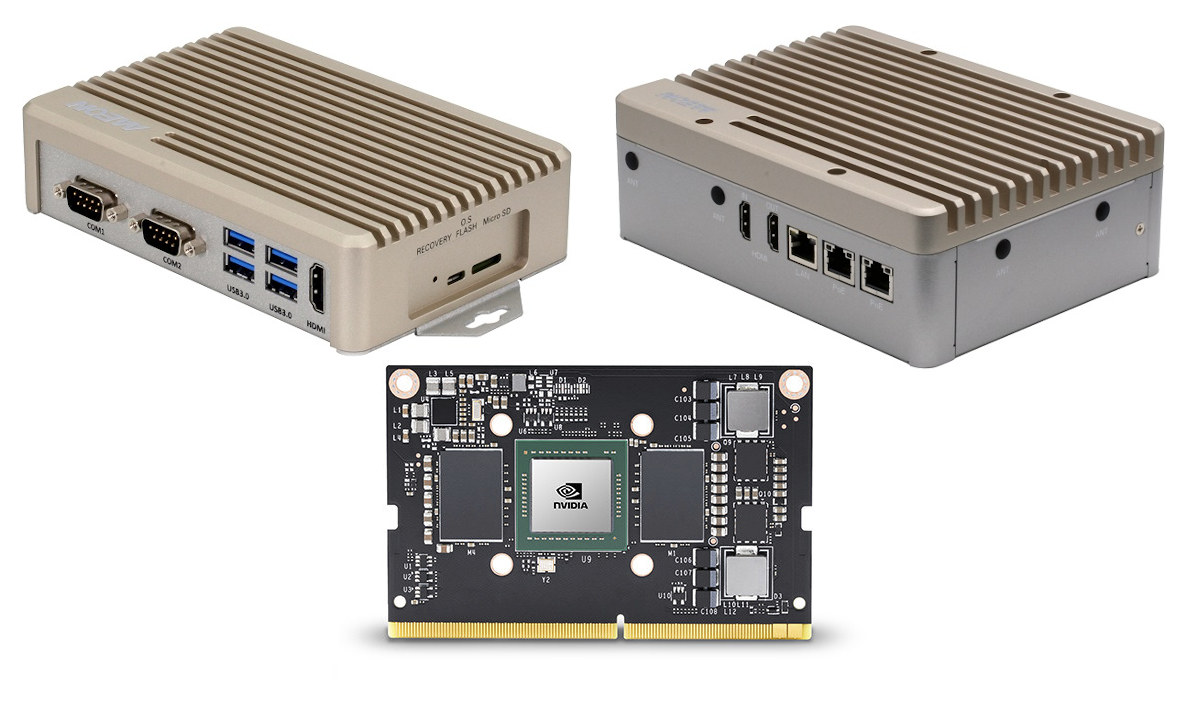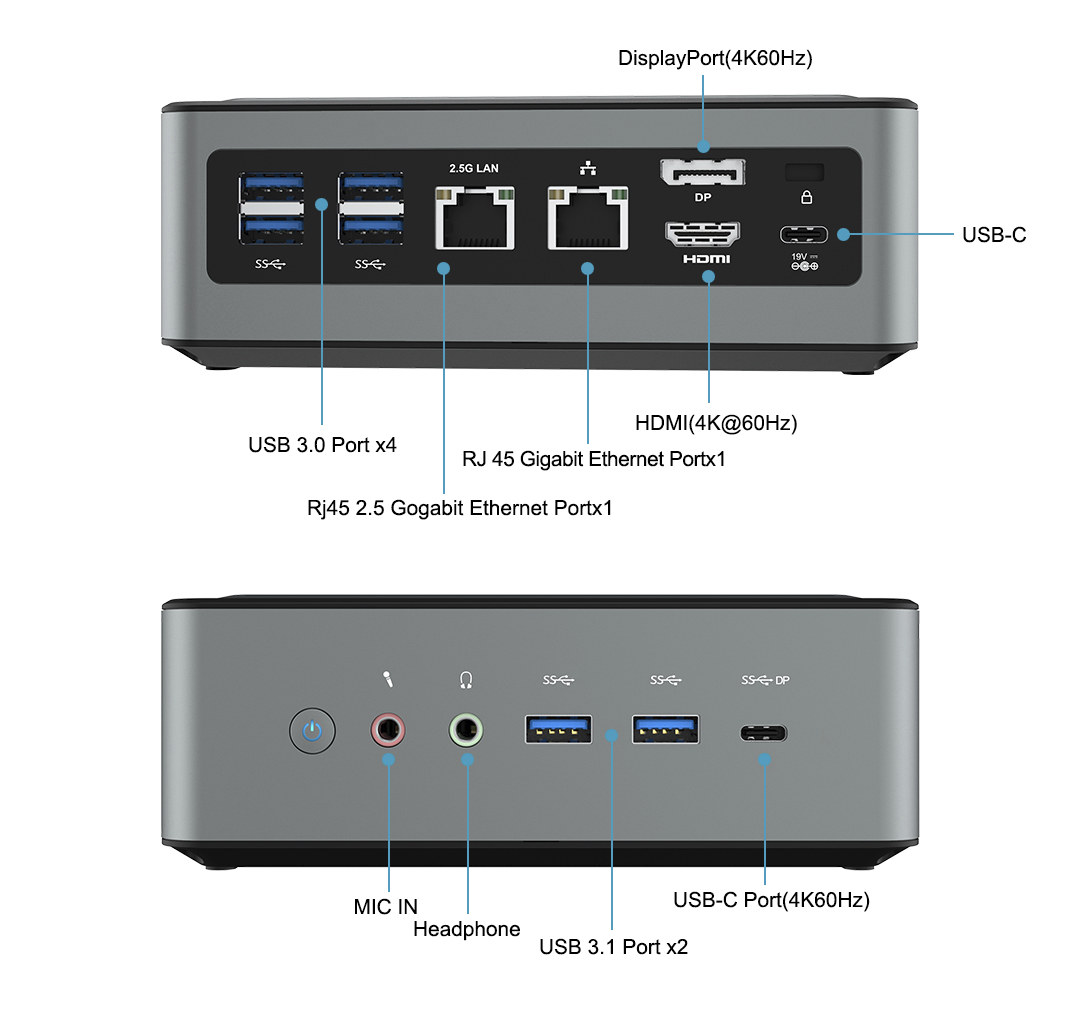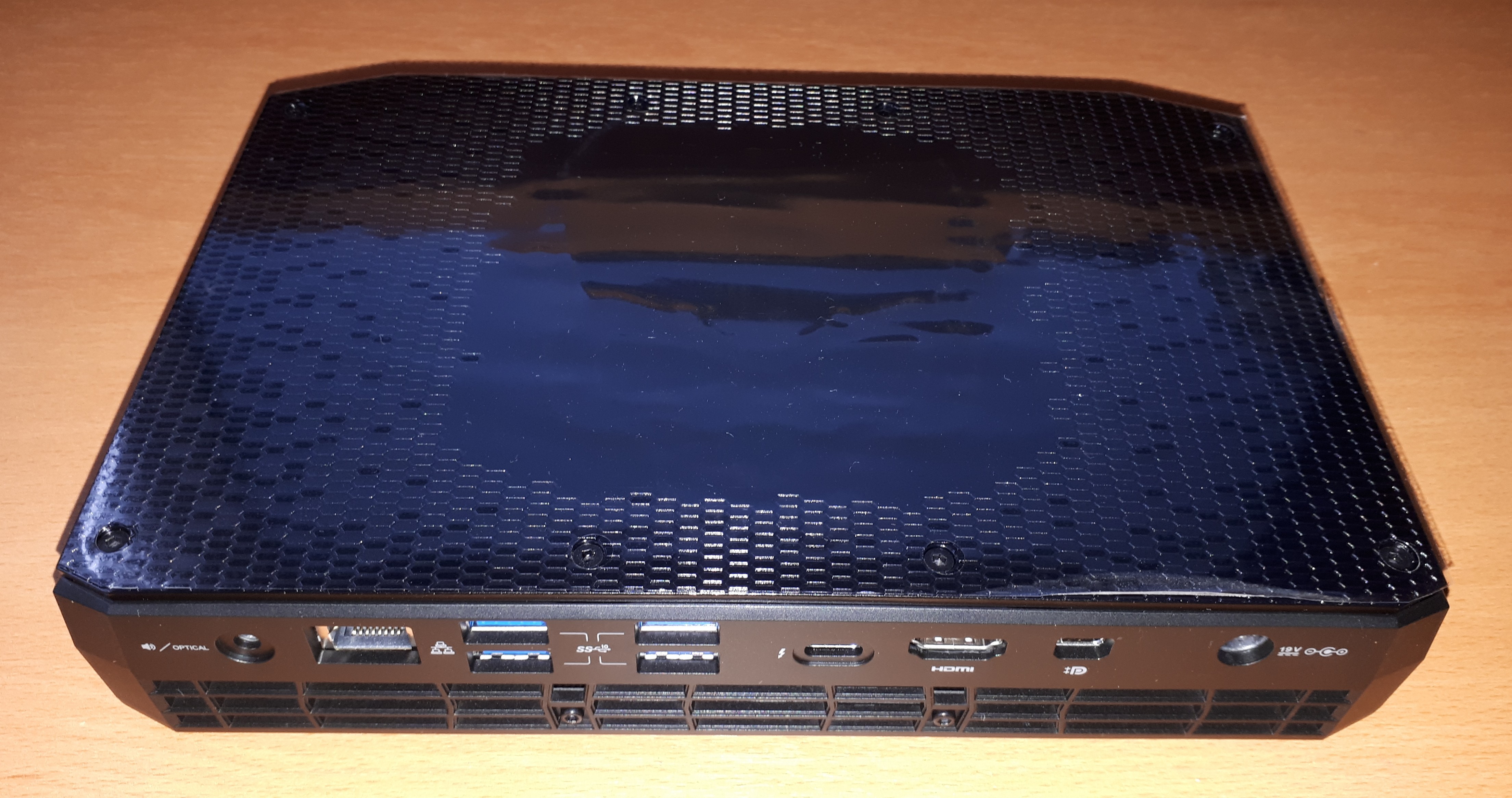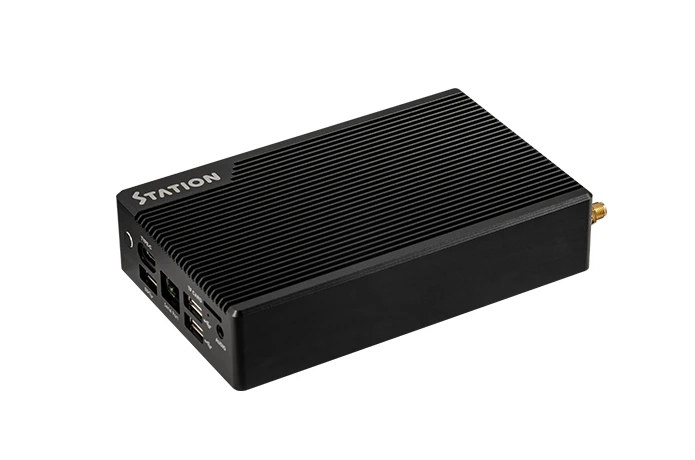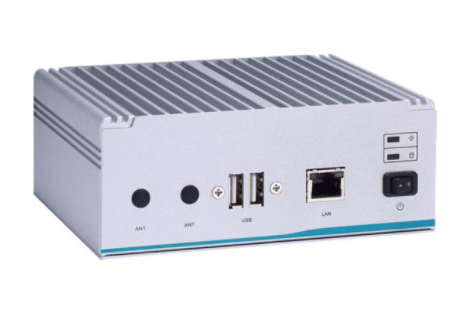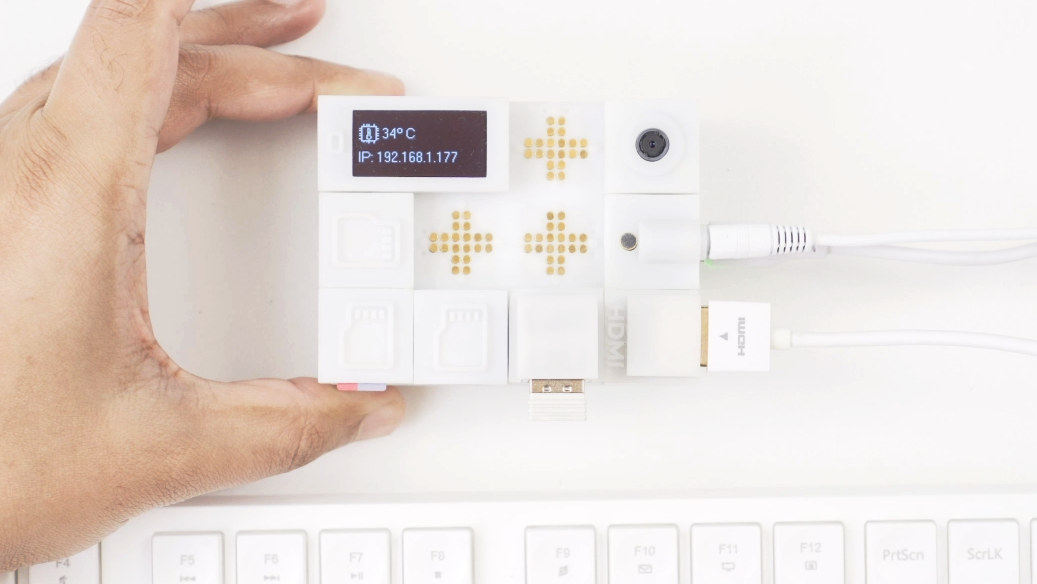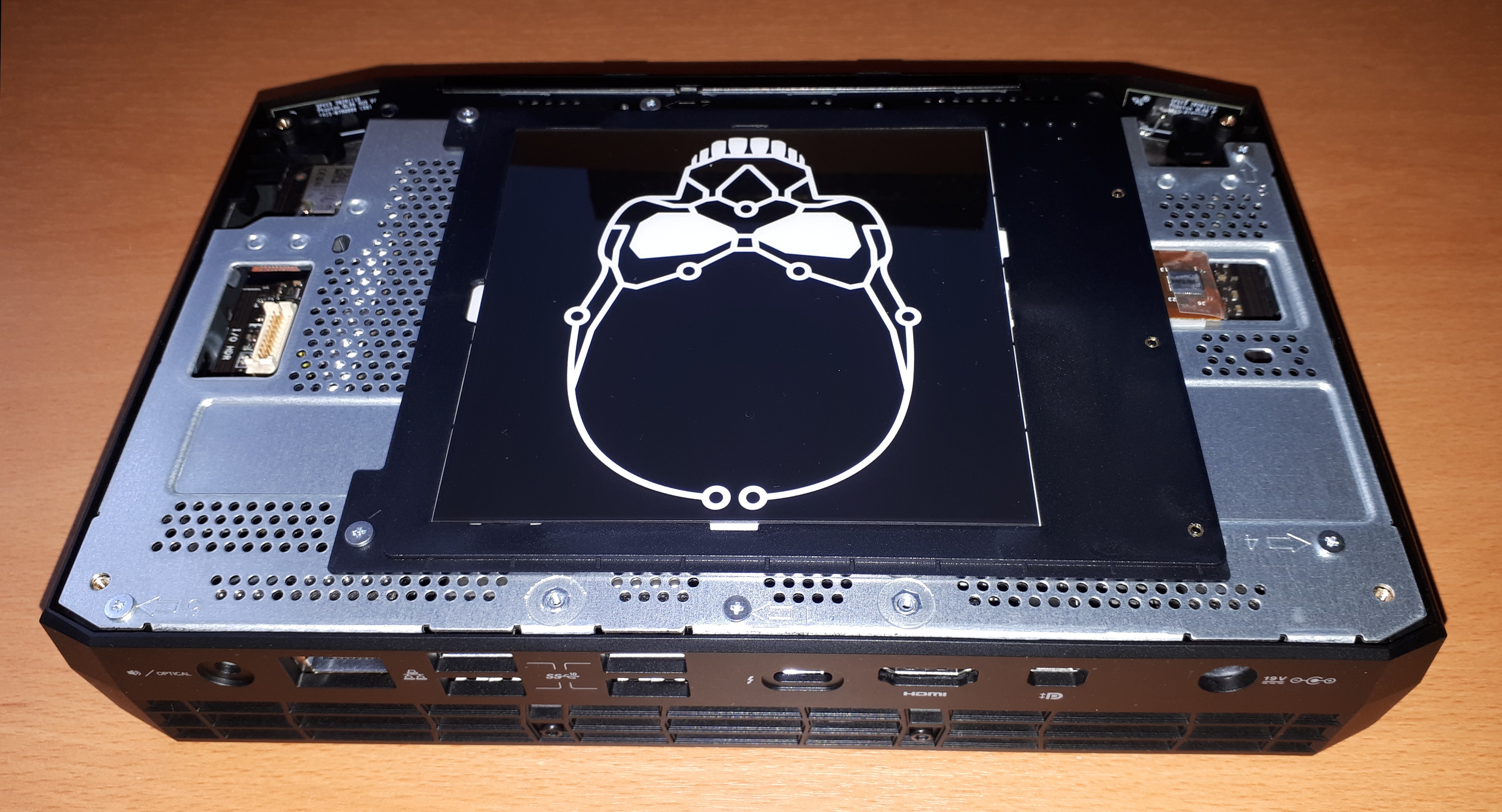Eurotech BoltGPU 10-31 is a rugged fanless embedded system powered by NVIDIA Jetson Xavier NX module, equipped with four FAKRA connectors for GMSL camera, and designed to bring Edge AI and machine vision to rolling stock (e.g. trains) and automotive applications. The BoltGPU 10-31 also features 16 GB of eMMC flash, NVMe SSD support, three Gigabit Ethernet interfaces, WiFI 6 and Bluetooth 5.1, two USB3.1 ports, as well as isolated CAN-FD, optoisolated DIO, video out, and GNSS with optional RTK. BoltGPU 10-31 specifications: System-on-Module – NVIDIA Jetson Xavier NX with hexa-core NVIDIA Carmel ARM v8.2 64-bit CPU with 6MB L2 + 4MB L3 cache, 384-core NVIDIA Volt GPU with 48 Tensor Cores (up to 21 TOPS of accelerated computing), 8 GB LPDDR4x RAM, 16GB eMMC 5.1 flash Storage MicroSD card socket Optional 512 GB NVMe SSD on M.2 Key M socket 256 Kbit Serial EEPROM Video Output – 1x Mini […]
Edge AI and robotics embedded computers feature NVIDIA Jetson TX2 NX module
NVIDIA unveiled a cost-down version of the Jetson TX2 module with the Jetson TX2 NX SO-DIMM system-on-module last month, and AAEON is one of the first companies to have updated some of their products with the new module. AAEON’s BOXER-823x-series of fanless embedded computers feature the NVIDIA Jetson TX2 NX module, and multiple Ethernet ports, including some PoE capable for the development of edge AI and robotics applications. BOXER-8230AI AI Edge Fanless Embedded Box PC This model offers a mid-range alternative between the Jetson Xavier AGX NX-based BOXER-8250AI embedded box PC and the Jetson Nano-powered BOXER-8220AI mini PC both of which offer the same ports. BOXER-8230AI specifications: SoM (CPU/Memory/Storage) – NVIDIA Jetson TX2 NX with dual-core NVIDIA Denver 2 64-Bit CPU and quad-core Arm Cortex-A57 MPCore processor @ up to 2.0 GHz, 256-core NVIDIA Pascal GPU @ up to 1.3 GHz, 4GB LPDDR4, 16GB eMMC flash Storage – MicroSD card […]
AMD Ryzen 5 4500U Mini PC offers triple 4K display support, 2.5GbE
AMD Ryzen 4000-U series 15W processors were announced in January 2020, and by the end of the year, we covered some mini PCs with Ryzen 3/5/7 processors from the new family with products such as ASRock Mars 4000U and ASROCK 4X4 BOX-4800U. MINISFORUM has now announced its own Ryzen 4000-U series mini PC with MINIXFORUM HM50 mini PC powered by an AMD Ryzen 5 4500U hexa-core processor that offers three 4K display output ports (HDMI, DP, and USB-C), as well a 2.5GbE and Gigabit Ethernet ports, six USB 3.0/3.1 ports and more. MINISFORUM DeskMini HM50 mini PC specifications: SoC – AMD Ryzen 5 4500U hexa-core/hexa-thread processor @ 2.3 GHz / 4.0 GHz (Turbo), with 6-core Radeon graphics @ 1.5 Hz, 11MB cache, 15W TDP (cTDP: 10-25W) System Memory – 2x DDR4 SODIMM sockets (fitted with 2x 8GB RAM modules, but upgradable up to 2x 32GB) Storage – 256GB or 512GB […]
Linux and Memory Performance on an Intel NUC 11 Enthusiast Phantom Canyon NUC11PHKi7C
I’ve already looked at Windows performance on the NUC11PHKi7C Enthusiast Phantom Canyon which is Intel’s latest NUC 11 flagship product specifically targeting gamers as it includes an NVIDIA RTX 2060 GPU. Now it is the turn of Linux and like before I will compare performance against Intel’s previous NUC with a discrete GPU: the NUC 9 Extreme Ghost Canyon. I will also briefly revisit Windows performance by looking at the impact of using 3200MHz memory as opposed to the 2400MHz used during the previous review. Hardware Overview As a reminder, the NUC11PHKi7C physically consists of a 221 x 142 x 42 mm (8.70 x 5.59 x 1.65 inches) rectangular plastic case. It is an actively cooled mini PC and uses Intel’s 10 nm Core i7-1165G7 Tiger Lake processor which is a quad-core 8-thread 2.80 GHz processor boosting to 4.70 GHz with Intel’s Iris Xe Graphics and the NUC also includes […]
Station P2 Arm mini PC offers dual GbE, M.2 & SATA SSD, up to 8GB RAM (Crowdfunding)
Last week, we noted Firefly launched the first RK3568 system-on-module with Core-3568J AI Core and a corresponding full-featured development kit. But the company has been working on another interesting Rockchip RK3568 based device with Station P2 mini PC. Most Arm mini PCs need to make compromises when it comes to interfaces having to rely on USB bridges, but Station P2 feels very much like standard x86 based mini PC, albeit with a slower processor, thanks to native interfaces, or implemented through PCIe, with M.2 and SATA 3.0 SSD/HDD, dual Gigabit Ethernet, as well as WiFi 6, several USB 3.0/2.0 ports, and support for up to 8GB RAM among other features. Station P2 mini PC specifications: SoC – Rockchip RK3568 quad-core Cortex-A55 processor @ up to 2.0 GHz with Arm Mali-G52 2EE GPU with support for OpenGL ES 1.1/2.0/3.2, OpenCL 2.0, Vulkan 1.1, 0.8 TOPS NPU for AI acceleration, 4Kp60 H.265/H.264/VP9 […]
Axiomtek’s Compact Fanless Embedded System Features Intel Processors
Axiomtek has announced eBOX560-52R-FL, which is a palm-size fanless embedded system featuring Intel Core and Celeron Whiskey Lake-U processors. We also saw ICP Germany’s fanless Linux embedded system featuring NXP i.MX 8M processor. This device was dedicated to IoT gateways and data acquisition applications. In contrast, the eBOX560-52R-FL fanless embedded system is for more diverse use cases including machine and logistics automation, station gate controls, and ticket vending machines. The eBOX560-52R-FL fanless embedded system comes with two independent 4K Ultra HD displays via DisplayPort++ and HDMI ports. The device features 2 GbE LAN for faster communication and networking, as well as one M.2 Key E 2230 for the Wi-Fi module. The embedded system can endure up to 50G shock and 3Grms vibration thus suitable for industrial applications. The operating temperature of the device ranges from -10°C to +50°C with 0.7 m/s airflow whereas the storage temperature ranges from -20°C to […]
Pockit modular Linux computer takes hot plugging magnetic blocks
There have been attempts to create modular computers and smartphones to reduce electronics waste and improve user-serviceability over the years with initiatives and products like Google Project Ara, PinePhone and Fairphone3 smartphones, DevTerm mini computer, Olimex TERES-I laptop, and many more. Here’s another modular computer project that looks really cool. Pickit modular computer is comprised of an STM32+ESP32 based mainboard with a socket for an optional Raspberry Pi Compute Module 3. The board includes magnets and electrical contacts to snap and hot-plug modules/blocks while the computer is running. The video demo embedded further below, is really impressive, but let’s check out Pockit preliminary specifications first: MCU – STMicro STM32 microcontroller Wireless MCU – ESP32 dual-core processor with WiFi and Bluetooth LE CPU module – Socket for Raspberry Pi Compute Module 3 Expansion 24+ feature BLOCKS ready to use with instant connection using magnetic-snaps including Ethernet, Display (HDMI), audio, sensor modules […]
Windows Performance on an Intel NUC 11 Enthusiast Phantom Canyon NUC11PHKi7C
The Enthusiast Phantom Canyon is Intel’s flagship product from its latest NUC 11 range of mini PCs. Specifically targeting gamers it includes an NVIDIA RTX 2060 GPU. In this article, I take a brief look at the performance under Windows and compare it against Intel’s previous NUC with a discrete GPU: the NUC 9 Extreme Ghost Canyon. Hardware Overview The NUC11PHKi7C physically consists of a 221 x 142 x 42 mm (8.70 x 5.59 x 1.65 inches) rectangular plastic case which is remarkable because of its size and is similar to just a graphics card like NVIDIA’s GeForce RTX 2060 Founders Edition (229 x 113 x 35 mm). It is an actively cooled mini PC and uses Intel’s 10 nm Core i7-1165G7 Tiger Lake processor which is a quad-core 8-thread 2.80 GHz processor boosting to 4.70 GHz with Intel’s Iris Xe Graphics. But it also includes NVIDIA’s N18E-G1-B notebook graphics […]


